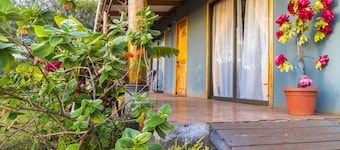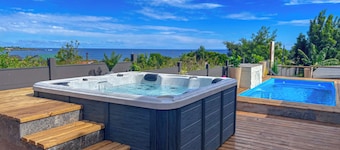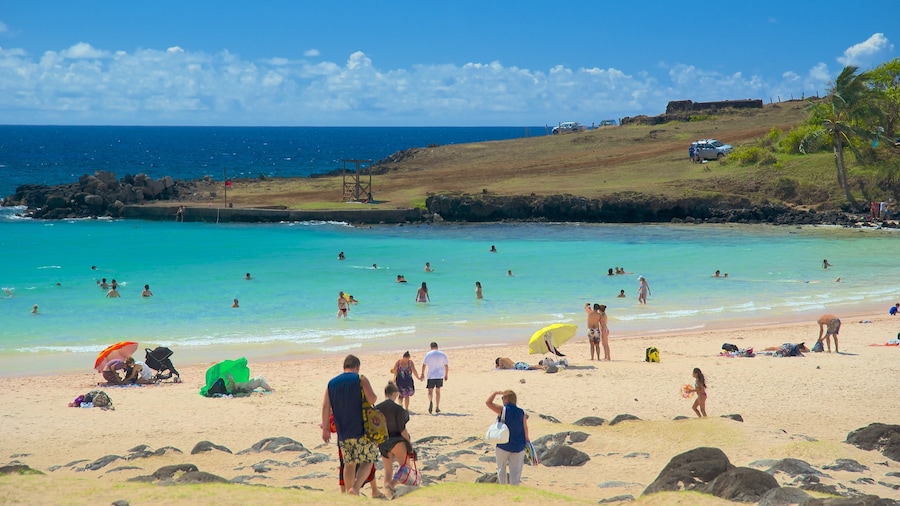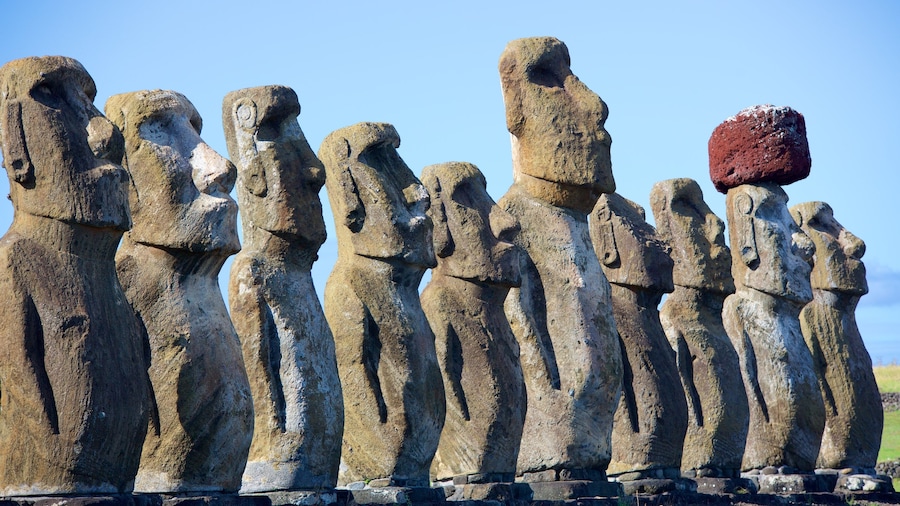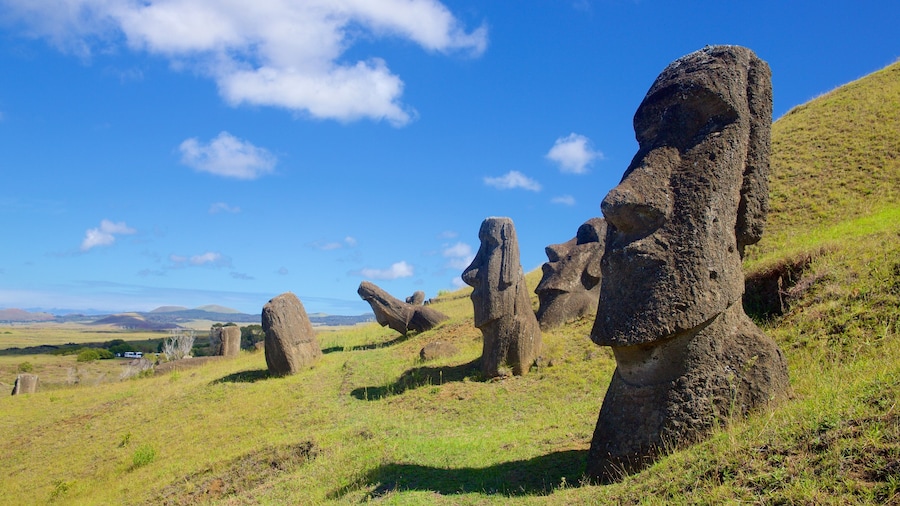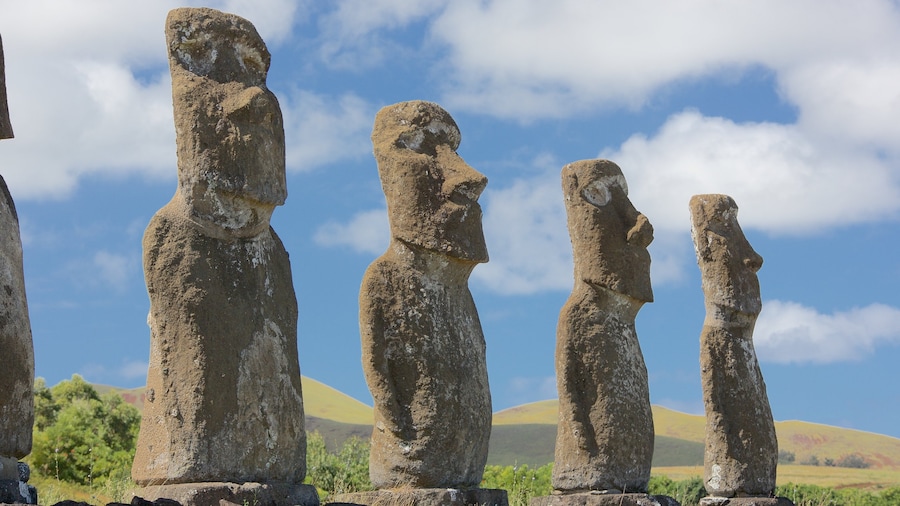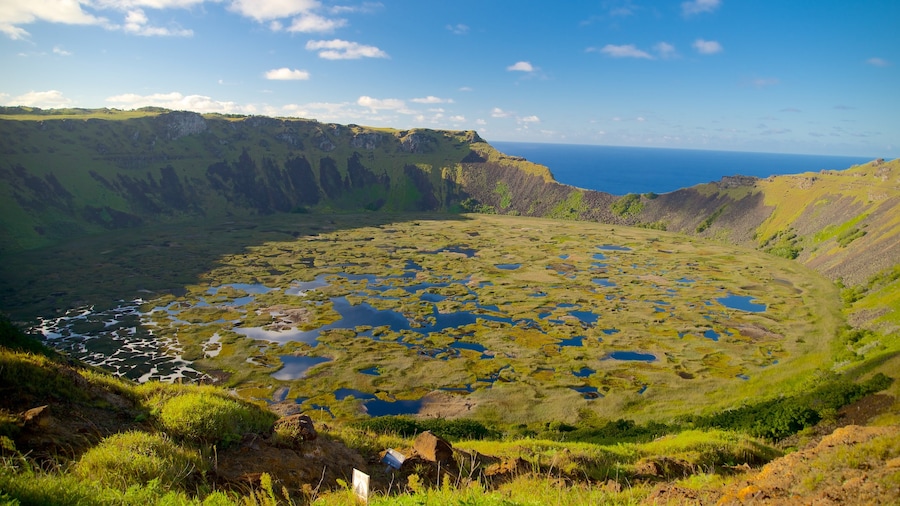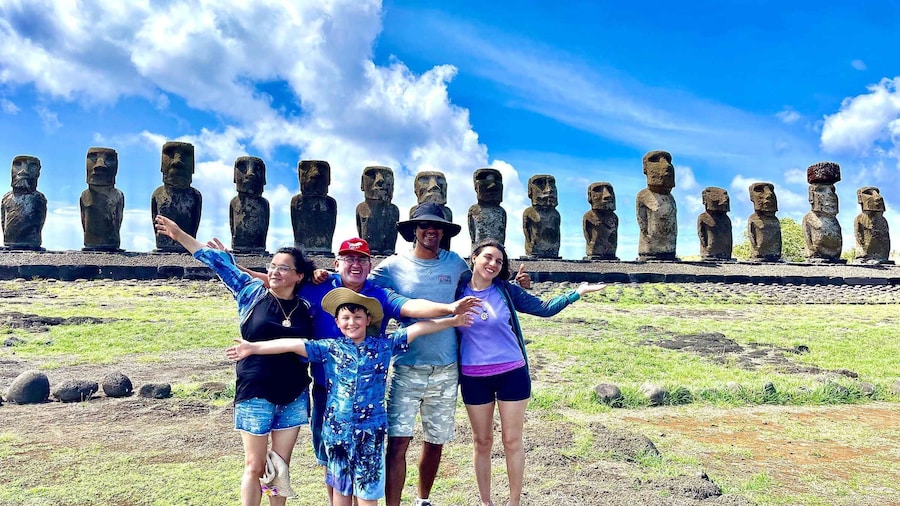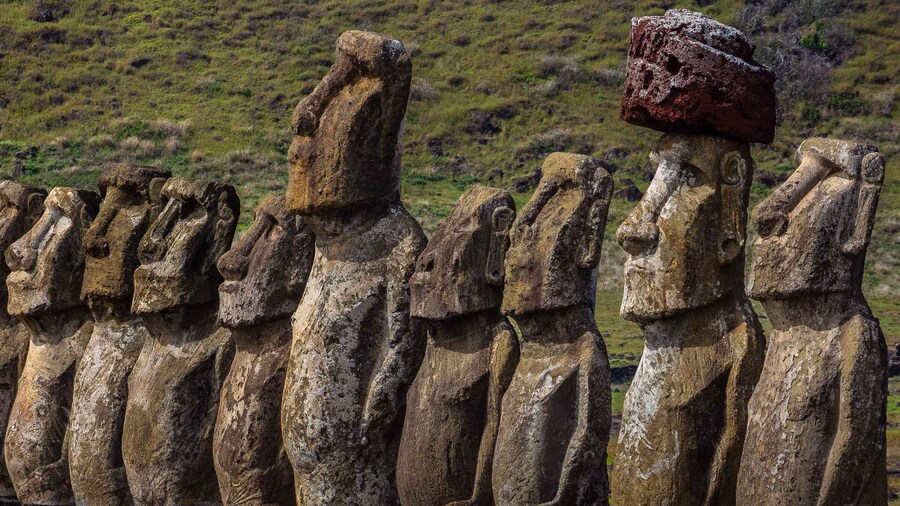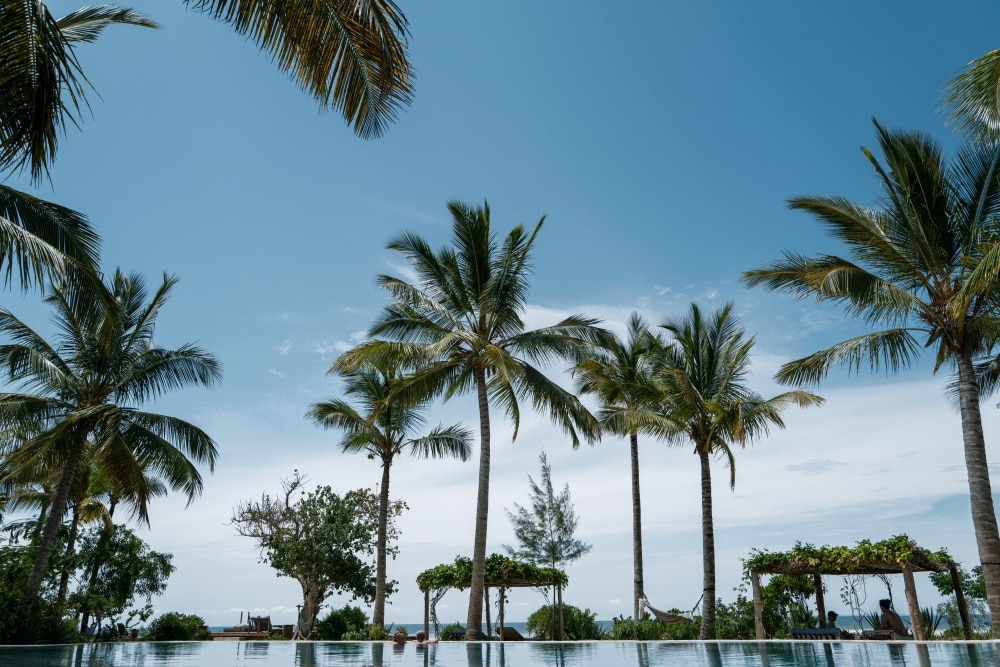Experience the markets, museums and bustle of the island’s principal town and see the mysterious ceremonial sites and volcanic wonders on its outskirts.
As the main settlement on Easter Island, Hanga Roa is fairly developed encompassing hotels, restaurants and shops. The town has a large harbor that acts as a hub for local fishermen as well as lots of colorful buildings. Browse the boutiques and cafés of Atamu Tekena Avenue and peruse traditional items at the Mercado Artesanal Municipal.
More than 3,000 inhabitants now live in Hanga Roa, making up the vast majority of the island’s population. The local culture blends Polynesian and Chilean customs. Listen for both Spanish and Rapa Nui being spoken.
Look at historical relics, such as old fishing hooks and cooking utensils, in the Museum Antropológico Padre Sebastián. Elsewhere in town, the Church of Hanga Roa houses intricate wooden sculptures.
Head to the Ahu Akivi spiritual site on the outskirts of town to view the world-famous moai statues, known for their disproportionately large heads. Here seven 16-foot (5-meter) tall stone figures stand in a row facing the sea. Venture to the Rano Raraku volcanic crater to examine unfinished sculptures, among them the tallest moai on the island.
Climb up the extinct Rano Kau volcano and admire the mesmerizing views of the ocean and the island from the peak. The crater has a rainwater lake and its own microclimate, which helps supports vegetation that doesn’t grow anywhere else on the island.
For a relaxing day out, bring the family to Anakena Beach. Its soft, white sand is a welcome change from the predominantly rocky coastline. Swim in the water and rent snorkeling gear and umbrellas.
Easter Island has a warm climate year-round, with cooler temperatures between May and September. Find internet, ATMs and other useful services in Hanga Roa.
Find Hanga Roa in the southwestern corner of the island between the extinct volcanoes of Terevaka and Rano Kau. Flying from Santiago de Chile will take about 6 hours.
Hanga Roa is the cultural hub of Easter Island and makes a great base from which to explore some of the world’s most fascinating sacred sites.









